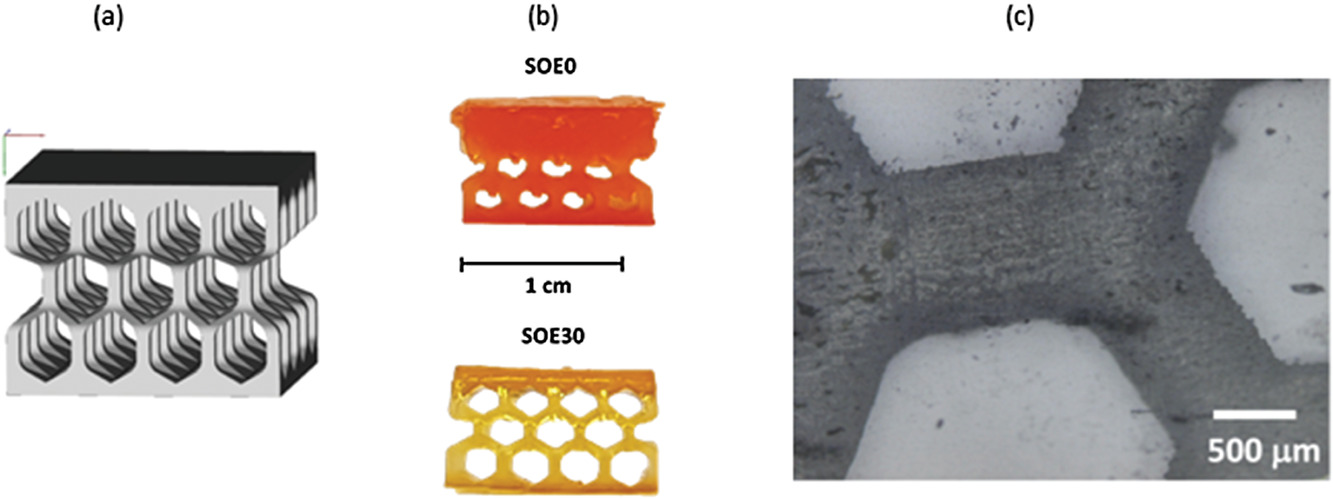In our latest paper we have worked for reducing shrinkage of polymeric 3D-printed materials. Congrats to Phillip Marx, Angelo Romano, and all co-authors. Philipp Marx, Angelo Romano, Ignazio Roppolo, Angela Chemelli, Inge Mühlbacher, Wolfgang Kern, Sunny Chaudhary, Thomas Andritsch, Marco Sangermano, Frank Wiesbrock Tri(ethylene glycol) divinyl ether and the spiro‐orthoester 2‐((allyloxy)methy)‐1,4,6‐trioxospiro[4.4]nonane can be formulated in different ratios and crosslinked by thiol‐ene reactions. The spiro‐orthoester is used as anti‐shrinkage additive, enabling shrinkage reduction of up to 39%. Addition of a radical photoinitiator for the thiol‐ene reaction and a cationic photoinitiator for the double ring‐opening of the spiro‐orthoester enables dual‐curing for application in 3D‐printing. The formulation free of the spiro‐orthoester shows gelation during the printing process and, correspondingly, low resolution. The formulations containing the spiro‐orthoester exhibit higher resolutions in the range of 50 µm. The resins containing mixtures of tri(ethylene glycol) divinyl ether and the spiro‐orthoester show permittivities as high as 104. The dielectric loss factor of the resins is in the range of 0.5–7.6, and the conductivity in the range of 1.3⋅10−11 to 2.0⋅10−11 S cm−1. These high‐κ materials can be 3D‐printed by digital light processing for the next generation of electronic materials.
3D‐Printing of High‐κ Thiol‐Ene Resins with Spiro‐Orthoesters as Anti‐Shrinkage Additive






